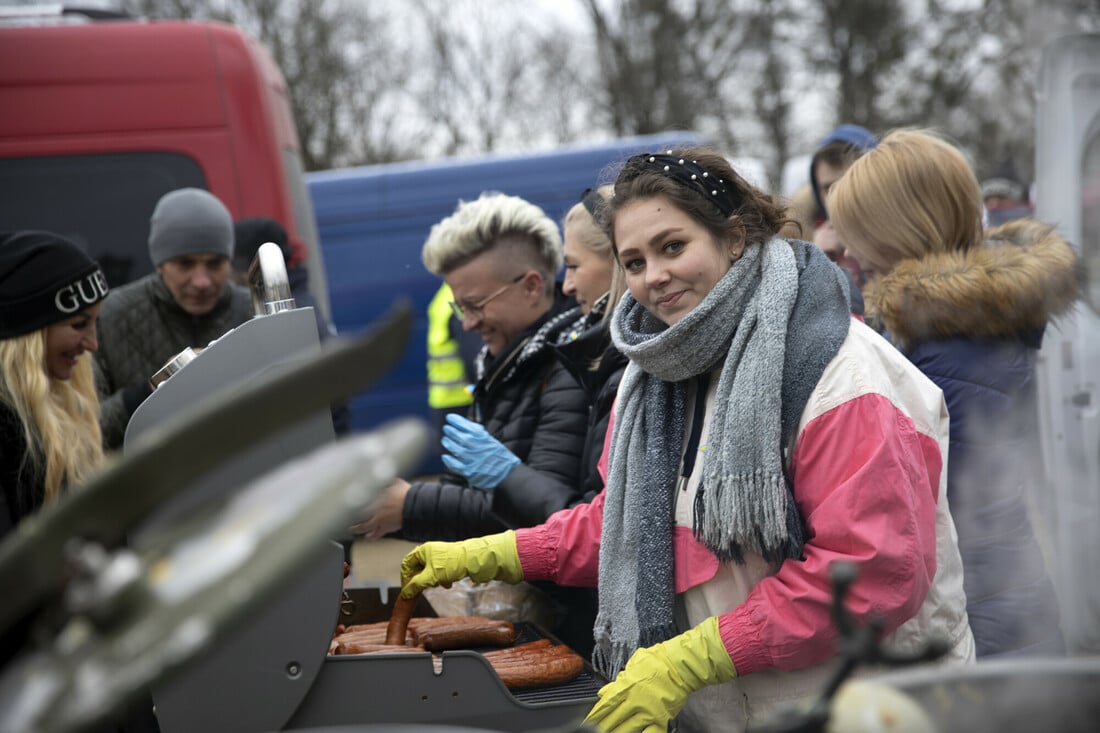
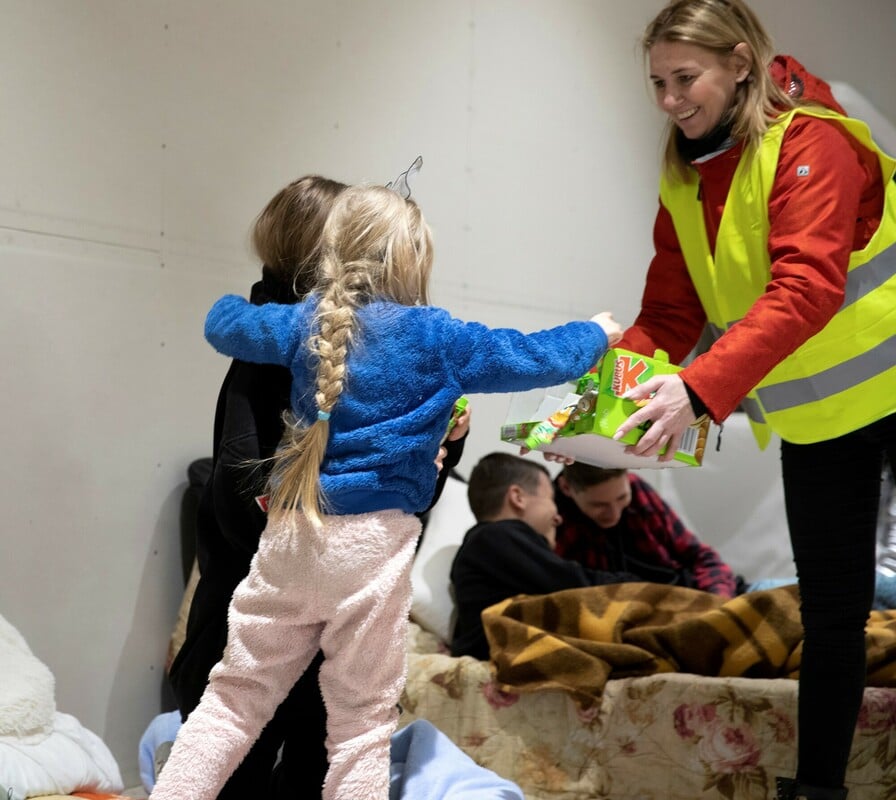

scroll down
Plan International Canada's Dr. Erika Silva returns to Poland one year afer the escalation of conflict in Ukraine and shares our efforts to help displaced people.
Dispatch from Poland
In the span of one week last February, nearly half a million people – mostly women and children – in Ukraine were forced to flee their homes, families and lives and seek safety in neighbouring countries like Poland, Romania and Moldova.
Over the past year, almost 15 million people from Ukraine have been forced to leave their homes, resulting in Europe’s largest refugee wave since the Second World War.
And now, one year later, there is still no end in sight to the war.
“The sentiment before [in February 2022], was that this was going to end soon,” says Dr. Erika Silva, a health advisor with Plan International Canada.
At the time, the people she spoke with crossing into Poland “felt that ‘soon’ was going to be two to four months. Now, ‘soon’ can be anytime. We are all realizing that this is an ongoing conflict.”
Health kits handed out at border crossings. Temporary shelters and daycares quickly mobilized. What more is being done to support women and children from Ukraine who are now in border countries such as Poland?
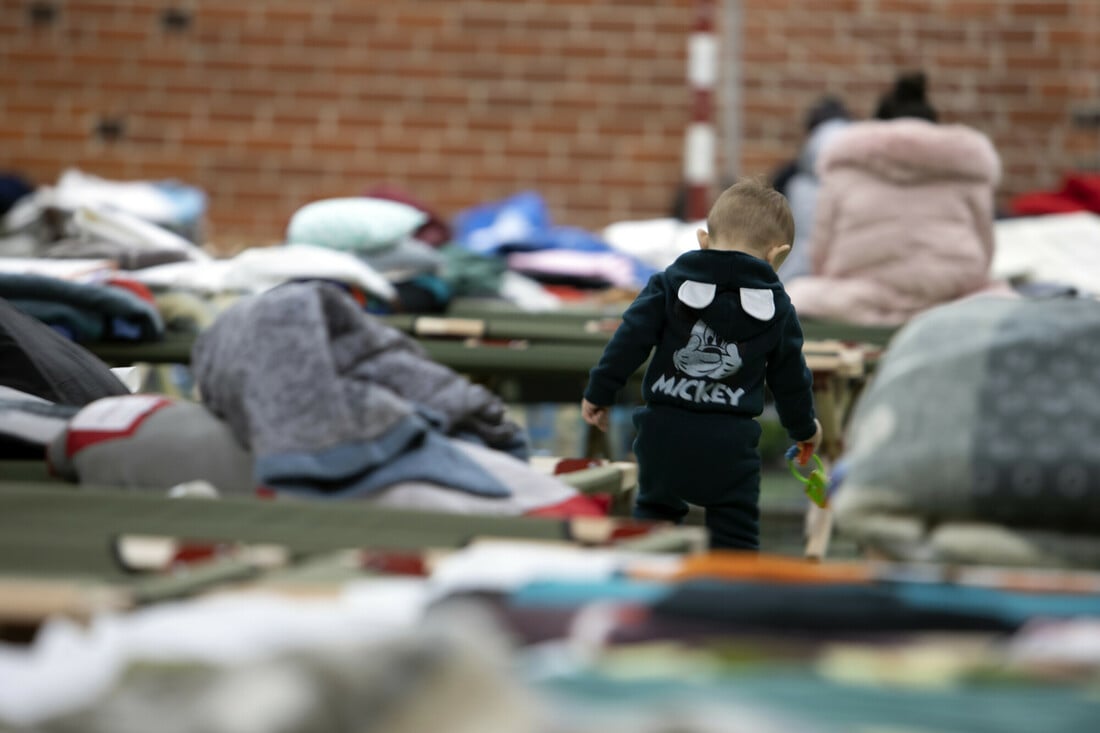
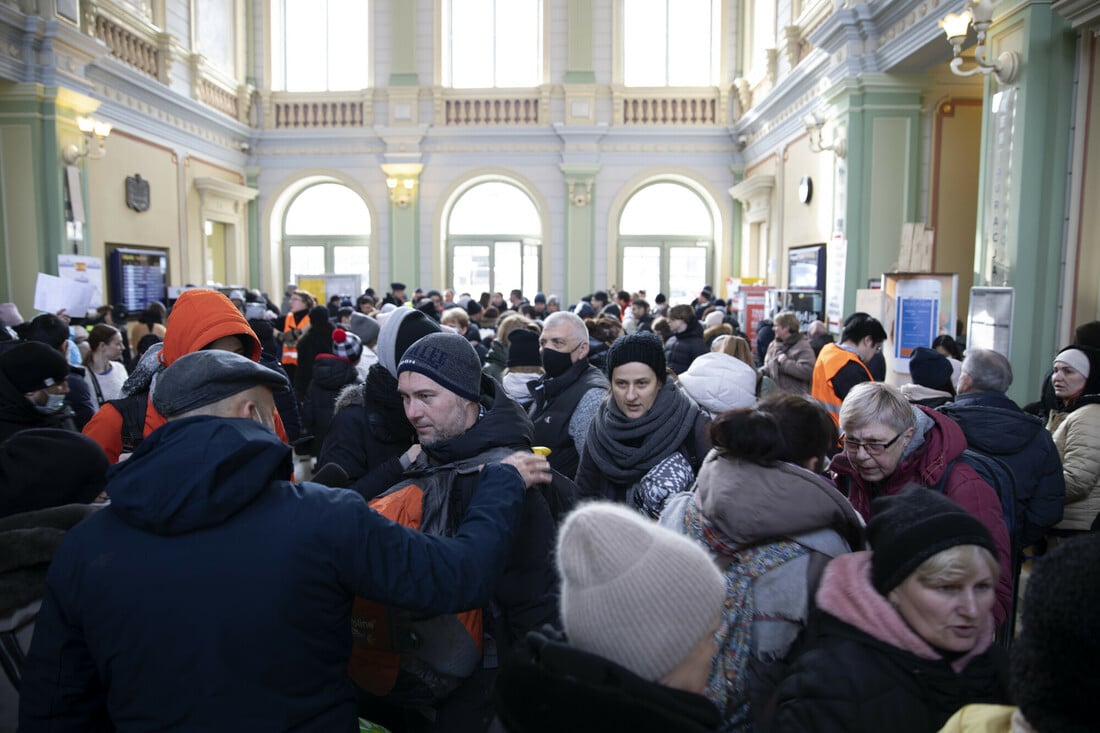
Poland, one year later
Silva returned from Poland in January after visiting the programs she helped set up when the conflict in Ukraine first escalated.
At that time, international aid organizations like Plan International Canada quickly mobilized to put in place supports for the people flooding the borders of countries like Poland.
Along with Plan International Germany, Silva, who is based in Ottawa, helped oversee the distribution of more than 12,000 health kits to adolescent girls and women at border crossings and at shelters set up to house women who’d fled Ukraine.
These kits contained everything from underwear and toothbrushes to menstrual pads and condoms and were given out over the span of a few days.
Women and children make up majority of those
who fled Ukraine
Most of those who fled were women – some were travelling alone, many were mothers with small children and even grandmothers with grandchildren.
All endured treacherous journeys to Poland.
“Rape and sexual abuse were often used as a weapon of war,” says Silva, noting that some of the women she met were also victims of gender-based violence at the hands of partners or others they encountered in temporary shelters in Ukraine.
In the span of a year, Plan International has reached more than 150,000 people in Ukraine, Poland, Moldova and Romania, having partnered with over 30 local organizations to set up more than 40 projects.
“
“The issue still is that these women have gone through traumatic experiences. Even if they haven’t been abused themselves, they'd been hiding, some lost family members and they saw the bombings. They saw everything.”
“Everything” includes nearly 7,000 civilian deaths to date in the war zone.
And an estimated 17.7 million people – about 40% of Ukraine’s population – are in need of humanitarian assistance.
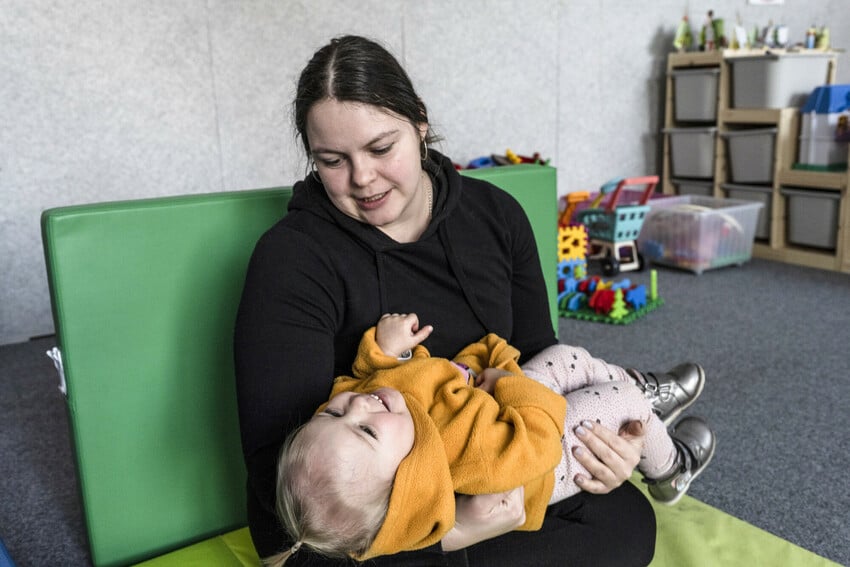
Shelters and daycares provide stability
Silva says now, about 60% of the temporary shelters in Poland remain open, but there are fears among local organizations about what will happen once the funding runs out.
Typically, funding for projects in emergency crises lasts for about a year, and that deadline is fast approaching.
One project that Plan International helped support was the opening of 10 daycares for children from Ukraine and Poland.
These daycares were able to train and employ 38 women and two men who were forced to leave Ukraine, allowing them to work in the daycares. Others who used the daycares were able to see examples of positive parenting.
“Some of these women were exposed to violence as well. They were stressed, and some didn’t have the parenting skills to be caring and affectionate toward their own kids,” says Silva.
“The idea was to bring the mothers to the daycare so they could see positive mothers as well.”
Silva adds that it was also an opportunity for the families to gain access to much-needed counselling.
Hope for a resolution remains
Silva says that people from Ukraine who were forced to flee to Poland believe they will get to go home one day.
Many remain reluctant to immigrate overseas to places like Canada or the U.S., choosing instead to stay close to Ukraine.
Silva recalls how one woman from Ukraine, who is now in Poland, recently showed her a photo on her phone of a pile of rubble where her house used to be. Although she was sad and in disbelief, she also remained hopeful.
Hopeful that people like her will one day be able to return to their lives in Ukraine – and hopeful that the world will not forget about them.
“There is a real fear the world will lose interest,” says Silva.
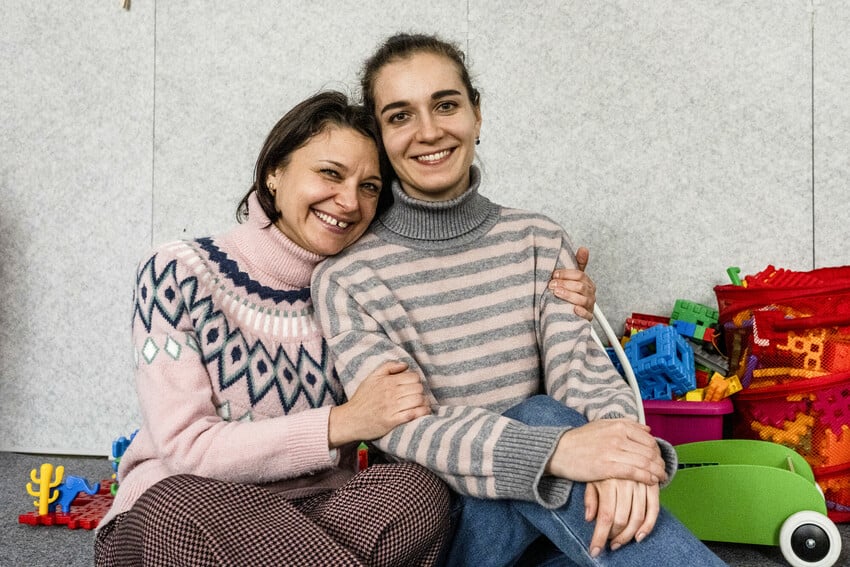
Read More
Read more about how people in Ukraine are preserving normalcy against a background of conflict
Words by Linda Nguyen
Design by Belle Vo
Reception centres like this one were set up a year ago near border-crossing points, offering food, transport and shelter to people from Ukraine.
A year later, hundreds of people from Ukraine continue to arrive every day at train stations in Eastern Poland.
In Lodz, two hours from Warsaw, Plan International helped open 10 daycare centres that provide free childcare and educational support for children from Ukraine.
Daryna, and her mother, Iryna, both work at one of the Polish daycare centres supported by Plan International after fleeing from Ukraine.